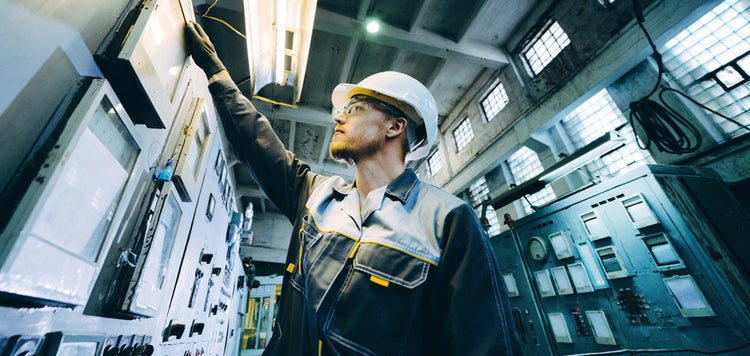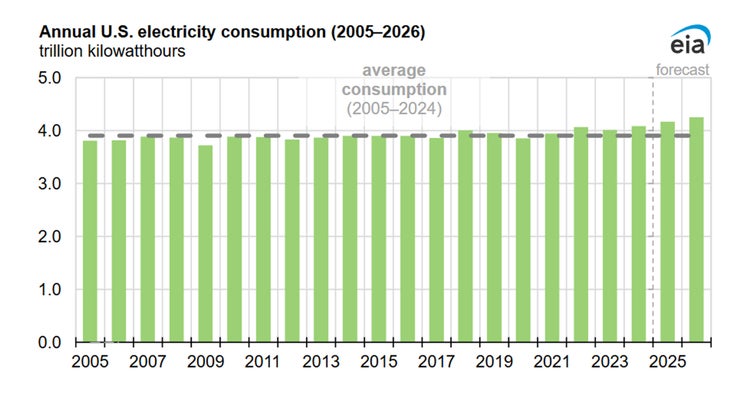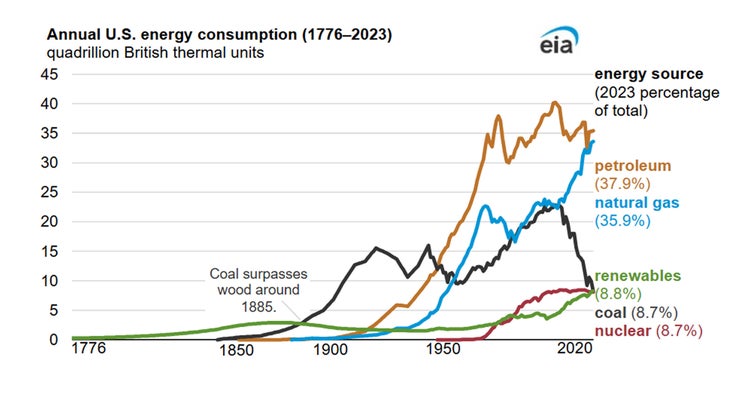Avoiding Costly Derates and Maintenance at Power Plants
A proven strategy for reducing forced outage rates, maintenance, and more
- Insights
- April 30, 2025

To keep up with growing electricity demand, power plant managers and decision-makers need strategies to ensure availability and reliability at existing plants. Power output is partially determined by condenser performance, and condensers rely on the plant’s clean water supply. Therefore, raw water intake screens play an important role in maximizing a power plant’s availability factor.
In this article, we explore trends in the power industry and how you can reduce equivalent forced outage rates (EFORs), maintenance, and more.
Growing Energy Consumption
Energy demand continues to grow, largely driven by increases in data centers, AI applications, and manufacturing. The U.S. Energy Information Administration (EIA) notes that electricity consumption in the U.S. grew by 2% in 2024. The EIA’s analysis forecasts that consumption will continue growing by 2% in both 2025 and 2026.

How Power Plants are Impacted
As consumption increases, it’s critical that power plants keep up with the demand. Electricity suppliers have two options to increase output: build more power plants and/or achieve the maximum availability and reliability from existing plants.
Per the U.S. EIA, fossil fuel plants cover nearly 83% of total U.S. energy consumption while nuclear power plants deliver 8.7% of demand. This spread puts increasing pressure on plants to deliver, and the cost of unplanned derates or maintenance is high.

The Cost of Derates
A reliable power system ensures consistent electricity delivery, regardless of disruptions. But different types of power plants face different impacts from derates.
Base load plants are designed to provide a continuous, stable electricity supply to meet the minimum level of demand on the grid. If the plant’s condensers can’t be cooled effectively due to dirty cooling water, output is reduced. In this situation, a plant may be forced into an emergency procurement process—buying power from other sources.
Per Hunter Mitchell, Hydrolox Business Development Analyst, “In these cases, base load plants feel a double impact: the loss of income from reduced power output, and also the cost of replacing it.” Securing a base load power plant’s availability factor is of great importance.
Peaker plants—or peaking power plants—play a crucial role in the energy grid by providing additional power during periods of high demand. These plants can be quickly ramped up to supply electricity when demand exceeds the base load power plants’ capacity. Their production cost is usually higher than a base load plant, so the revenue impact of derates is even greater. According to Mitchell, “A peaker plant needs to be able to respond quickly to changing demand, so consistent reliability is a key concern.”
Increasing Availability
The amount of power a plant can generate is largely determined by the effectiveness of the heat transfer process within the condenser. Condensers need plenty of water, and that water needs to be clean: free of harmful debris that can clog the condenser. The cooling water source—the plant’s raw water intakes—determines the amount and quality of water available.
Hydrolox™ traveling water screens are designed with a unique advantage. Because there are no side chains, these water screens provide more screening surface area within the same footprint. This design allows more water to flow to the condensers. The increase optimizes the condenser’s cooling capabilities, which in turn increases the amount of power a plant can generate.

Improving Reliability
As discussed in our article on extreme environmental conditions, storms, floods, and other weather events pose a threat to power plants. Sometimes, water screens encounter heavy debris. This includes tree trunks, landscaping materials, and anything else that’s swept into the water intake. One tactic to avoid water intake flow disruption is choosing traveling water screens that are built to handle heavy debris loads.
For example, the basket on most chain-driven water screens is only supported by the chains on either side. This leaves the screen itself vulnerable to heavy debris impacts. Hydrolox engineers identified this design flaw and created a frame with a robust steel carryway to support the screen. In fact, we offer the most impact-resistant traveling water screens on the market. Reliable water screens enable more efficient, reliable electricity production.
I recall an incident at a power plant on the Mississippi River. During a storm, their trash rack failed, which allowed large objects to be sucked into the screens. In the end, they found around 17 full-size trees, half of a boat, and a live alligator in front of the screens. They hired someone to save the alligator and removed the trees and the boat. I went to the plant shortly after this happened and the Hydrolox screens were operating fine.
Brian Poche
Application Engineer at Hydrolox
Reducing Maintenance
Condenser cleaning, water intake screen maintenance, and repairs are regular parts of operations. Choosing traveling water screens with an automatic cleaning process can greatly reduce the manpower needed. To further reduce maintenance, use chainless traveling water screens. Hydrolox engineers created a screen designed to operate 24/7/365 with virtually no maintenance.
The amount of condenser cleaning that a plant requires depends on how clean the intake water is. Hydrolox screens excel at filtering out debris and effectively eliminate bypass and carry-over. Their automatic cleaning process, screen rotation, and superior spray bars ensure that a clean screen is always presented at the water intake. This reduces headloss and eliminates the majority of manual cleaning. It also ensures that only clean water is pumped to the condenser, further reducing maintenance and enhancing plant performance.
Hydrolox Screens: Five Years, Zero Unplanned Maintenance
Learn how retrofitting helped a power plant achieve zero unplanned downtime and 50% less condenser cleaning.
The Bottom Line
To keep up with growing electricity demand, suppliers need maximum availability from existing plants. If you want to help your plant produce more electricity—more reliably, and with less maintenance—consider using more effective water screens. Your raw water intakes protect your condenser and downstream equipment, ensuring that they function optimally. Protect these assets and enhance your production capabilities with water screens you can trust. As the saying goes: you can be prepared or pay for repairs.
